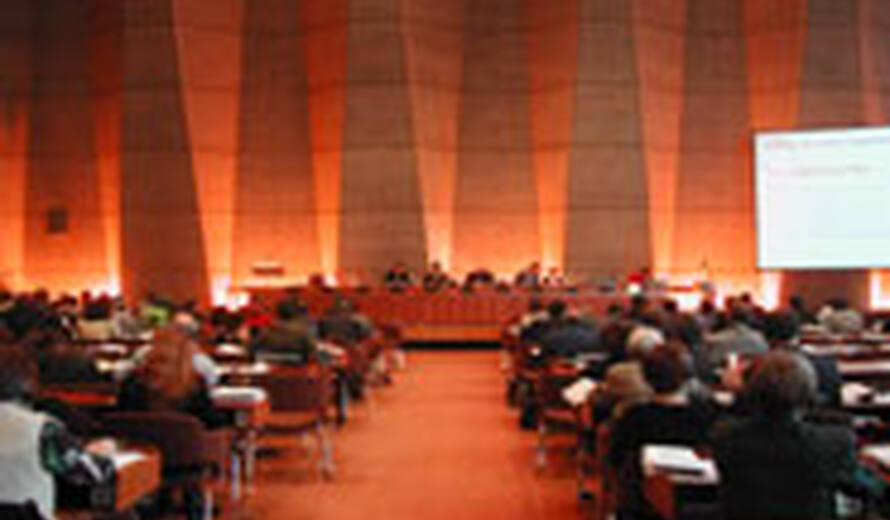New Sites to be Inscribed on UNESCO World Heritage List
Forty-two new sites will be proposed for inscription on the UNESCO World Heritage List during the 29th session of the World Heritage Committee scheduled for July 10-17 at the International Convention Centre (ICC) in Durban, South Africa. Extensions will be proposed for nine already inscribed sites. UNESCO Director-General Koïchiro Matsuura will address the opening session, which is open to the press, at 4pm on July 10. The session will be presided by Themba Wakashe, South Africa’s Deputy Director-General for Heritage and National Archives.
This year, the Committee will review 28 cultural sites, 10 natural sites and 4 mixed sites presented by 44 countries: Albania, Armenia, Austria, Bahrain, Belarus, Belgium, Bosnia-Herzegovina, China, Chile, Colombia, Cuba, Czech Republic, Dominican Republic, Egypt, Estonia, Ethiopia, Finland, France, Gabon, Germany, Islamic Republic of Iran, Israel, Italy, Japan, Latvia, Lithuania, Malawi, Mauritania, Mexico, Nigeria, Norway, Panama, Paraguay, Republic of Moldavia, Republic of Tanzania Russian Federation, Slovakia, South Africa, Sweden, Switzerland, Thailand, Turkmenistan, United Kingdom, and Ukraine. The Committee will also examine the extension of nine sites already inscribed in nine countries: Belgium, France, India, Germany, Serbia-Montenegro, South Africa, Spain, United Kingdom and Ukraine.
Four countries, Bahrain, Bosnia-Herzegovina, Gabon and Republic of Moldova, could, for the first time, see one of their sites (or a site shared with other countries) join the World Heritage List.
On July 16, a special event, called Partners for Africa, will focus on Africa’s heritage and the action taken by UNESCO partners to safeguard it. Four subjects will be discussed in the course of the day: the credibility of the List, conservation of the sites, capacity-building and raising awareness among the public and youth.
Despite some progress, Africa is under-represented on the World Heritage List. In the past decade, the number of World Heritage sites in Africa rose from 68 to 100 with two thirds of these in sub-Saharan Africa. Currently, the continent has 64 cultural sites, 33 natural and 3 mixed sites on the List. Concerning the List of World Heritage in Danger, the number of African sites rose from 3 in 1994 to 17, including 12 natural sites, in 2004. These represent 49% of the sites in danger.
The Committee will also re-examine the 35 sites currently on the List of World Heritage in Danger. This concerns sites that face serious threat either from chemical or mining , pollution; pillaging; war; poorly managed tourism; poaching etc. The List includes the minaret and archaeological vestiges of Jam, Afghanistan and Timbuktu, Mali. One of the candidate sites for the World Heritage List could also be inscribed on the list of those in danger.
To date, the 1972 Convention on the Protection of the World Cultural and Natural Heritage protects 788 sites “of outstanding universal value” located in 134 States Parties and includes 611 cultural sites, 154 natural and 23 mixed sites. The Convention encourages international cooperation in order to safeguard this common heritage. A hundred and eighty members strong, it is one of the most ratified international tools. Parties commit to preserving sites on the World Heritage List as well as sites of national and regional importance, notably by providing an appropriate legal and regulatory framework.
The World Heritage Committee is comprised of representatives of 21 countries. Each year, the Committee adds new sites to the List. The sites are proposed by the States Parties. Applications are then reviewed by two consultative bodies: cultural sites by the International Council on Monuments and Sites (ICOMOS), and natural sites by the World Conservation Union (UICN). The International Centre for the Study of the Preservation and Conservation of Cultural Heritage (ICCROM) provides a further evaluation and also participates in the training of experts.
The World Heritage Committee is responsible for the implementation of the 1972 Convention. It examines reports on the state of conservation of the inscribed sites and asks States Parties to take measures when necessary. The Committee supervises the disbursement of over $2 million per year from the World Heritage Fund, aimed at emergency action, training of experts and encouraging technical cooperation. The Secretariat is ensured by the UNESCO World Heritage Centre.
